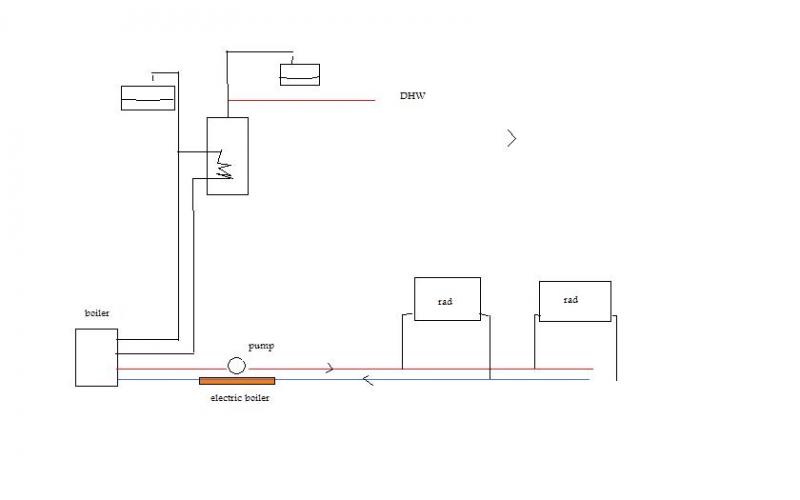Right then!
I am in the process of hacking my central heating about, did have a vintage oil boiler but have decided to go green and get a log burner with back boiler (rated at 9kw to room and 9kw to water) the existing system has a 28mm gravity dhw circuit which is fine and a 28mm vented heating circuit,
I plan on incorporating a 9kw electric boiler to boost in the morning when the fires gone low overnight however they are all 22mm and I am unsure if it would be fine to simply plumb it into the flow side of the back boiler incorporating the existing pump or should I go across the flow and return and fit another pump?
Anythoughts?!? i'm sure it wil work either way but want to make it as good as poss!
See attached image [/img]
I am in the process of hacking my central heating about, did have a vintage oil boiler but have decided to go green and get a log burner with back boiler (rated at 9kw to room and 9kw to water) the existing system has a 28mm gravity dhw circuit which is fine and a 28mm vented heating circuit,
I plan on incorporating a 9kw electric boiler to boost in the morning when the fires gone low overnight however they are all 22mm and I am unsure if it would be fine to simply plumb it into the flow side of the back boiler incorporating the existing pump or should I go across the flow and return and fit another pump?
Anythoughts?!? i'm sure it wil work either way but want to make it as good as poss!
See attached image [/img]


